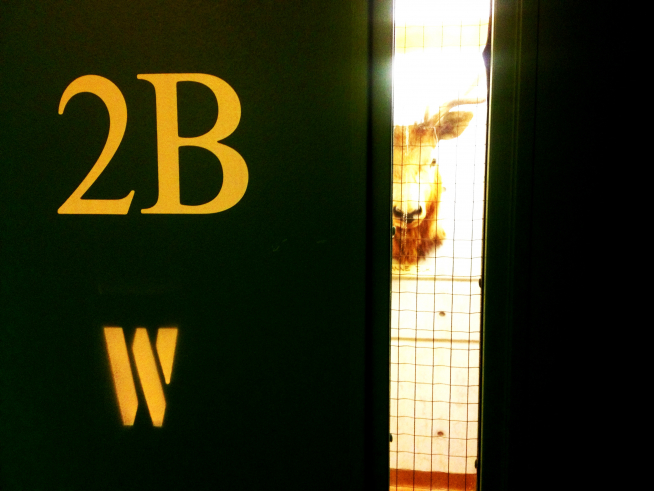Stories from 2B - Week 1: Paying attention to what's behind the curtain

This is where they’ve stashed me and where I’ve been working for the past five days. “2B or not 2B?” That is the question I have frequently been asking myself as I become horribly and regularly lost in these halls. These stairwells are like the Tardis, I end up somewhere but I’m not quite sure how.
(Life aim #243, make Shakespearean and Doctor Who references in a single paragraph, Tick)
Time does seem to be flying here behind the curtain at the ROM. I have only three weeks left to tell you everything I can about the wizardry that goes on behind-the-scenes at this fine institution. So far my days have consisted of attending programming meetings, attending staff meetings, learning about the process of scheduling exhibitions, missing meetings my superviser asked me to go to, bumbling into Ichthyology, chatting to curators about their work and learning the difference between “enthral”, “enthralled” and “in thrall”. (Oh stop being smug.) And writing, writing and more writing.
At the end of my first week at the ROM as a writer from that magical place known as “behind-the-scenes” I have discovered that what’s behind the curtain, really wants to be in the spotlight. Really wants to be in it and really needs to be in it, now more than ever.
(Life aim #244, make Shakespearean, Doctor Who and Wizard of Oz references in a single blog post. Double tick.)
Around the world, from Sydney to Toronto, an uncertain economic climate has meant cultural institutions are receiving less funding from the governments that manage them. For some time, the inherent worth of museums and the work they do has been enough to ensure that at least close to the amount required to keep museums working and relevant has been provided by “the people” and their governments. Now, we find ourselves in a position where that funding is no longer available. This combined with a general and decisive shift towards crowd-sourced knowledge systems, means that museums are now asking themselves not, “To be or not to be”, but rather, “What to be and how to be?”
In my time working behind-the-scenes in museums it’s become clear that a big part of the answer to this identity question is that museums find a way to be experts, not only in traditional museum work, but in communicating that work to others.
This is not to say we must now abandon traditional museum work. Indeed museums have a tradition of adapting and updating their methodologies to keep step and sometimes out step modern practises and philosophies. But museums are turning part of their focus to becoming brilliant communicators, conversation starters, facilitators.
The salient point here is not to become good at convincing people that museums are doing something worthwhile (although maybe some spin doctoring would not go astray), it means being worthwhile and for museums today that is becoming part of the conversations about important matters that people now use to construct knowledge. That means becoming part of our lives on a day to day basis and spotting and taking up opportunities to enrich the lives of everyone in this community. It is a great shift, but in reality, not so far from the historical basis of museum work.
In my first week here at the ROM, I’ve been struck by the passion and dynamic will of all of the people who work in this institution. This place could not exist with less passionate staff or less willing volunteers or less enthusiastic and talented students. The quality of people in and around this museum is obvious, even after only a week and their shared vision, of how to be and what, is obvious even in this challenging time for cultural institutions.
This is truly one of those remarkable places where a host of people come together to work on big ideas in one of the most surreal spaces imaginable. I look forward to the rest of my time behind the curtain.
Quote of the week: “Great, I’ll meet you at 2pm by the white Rhino.” Nicole Richards, Coordinator, Life in Crisis: Schad Gallery of Biodiversity.
Follow me on Twitter @museophiliac
